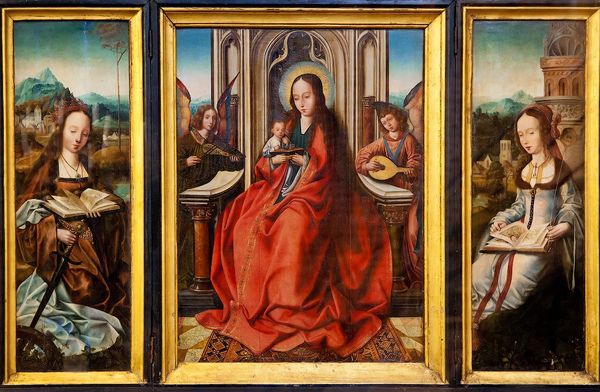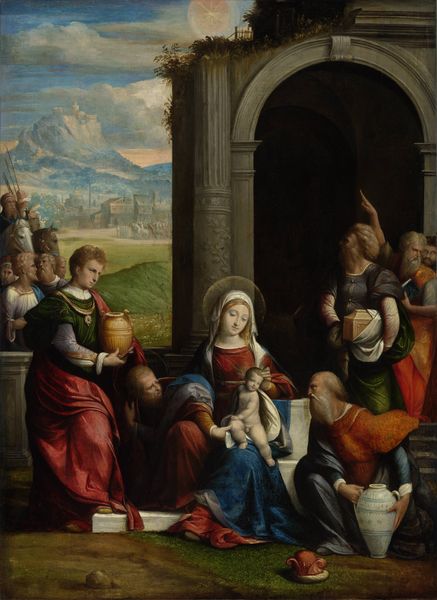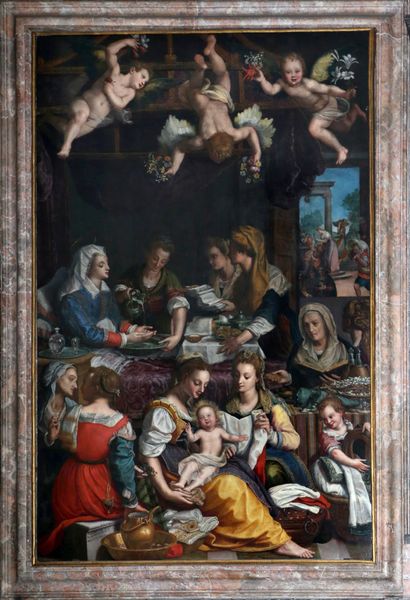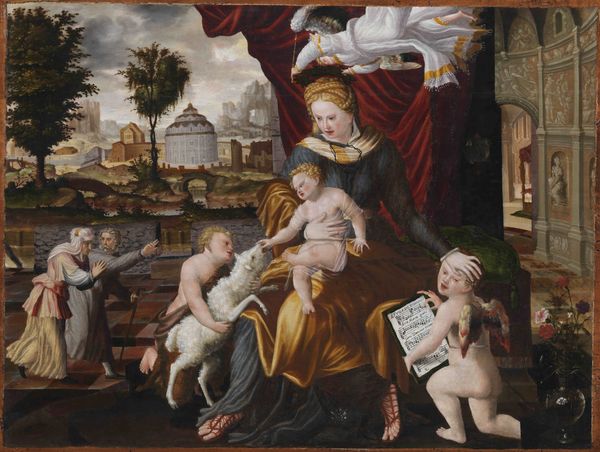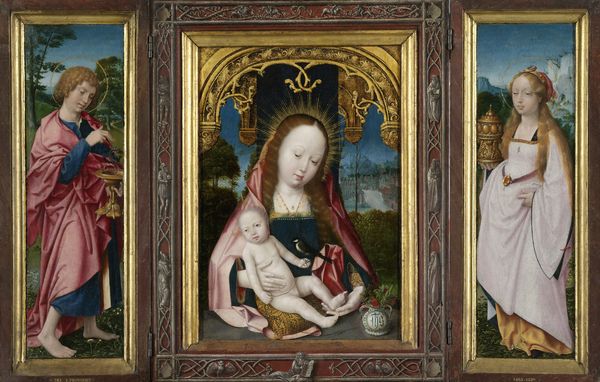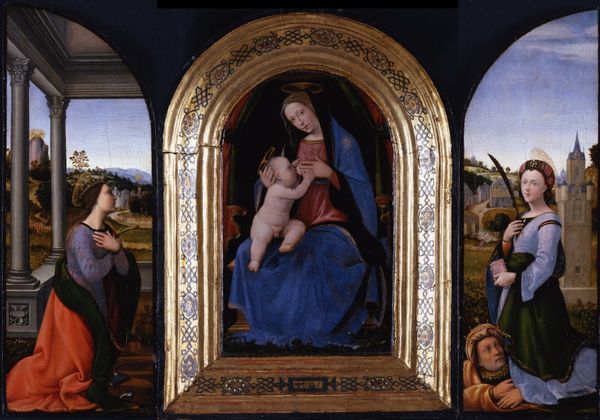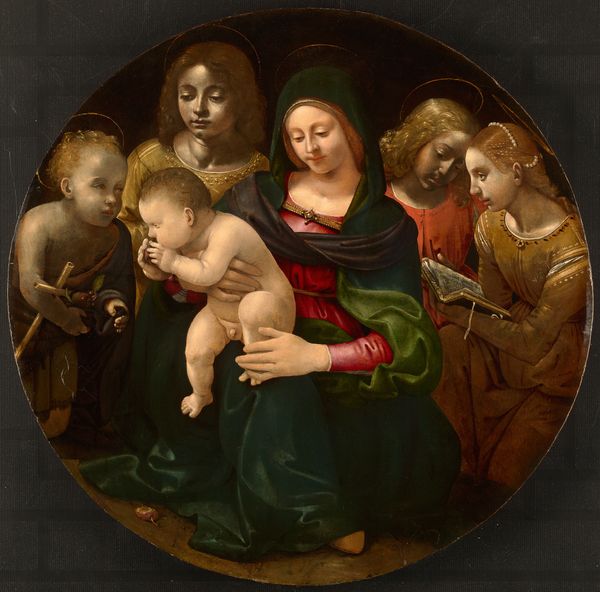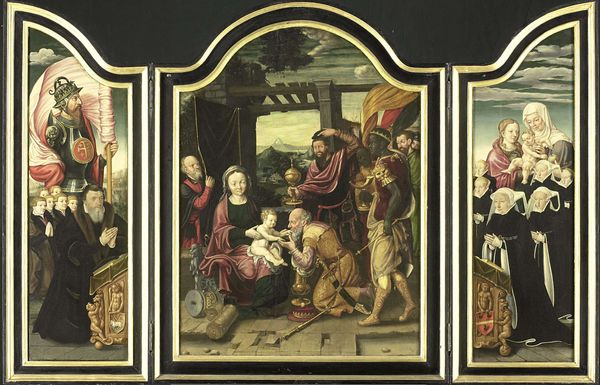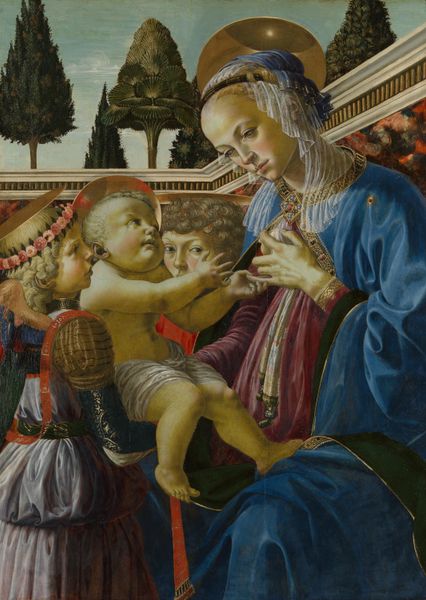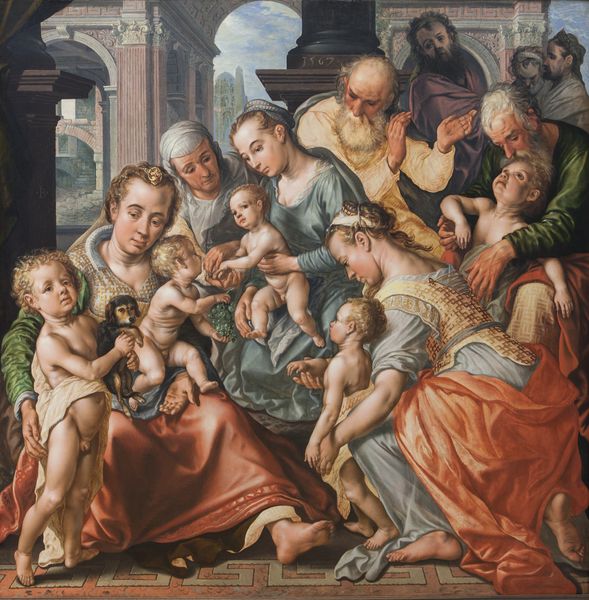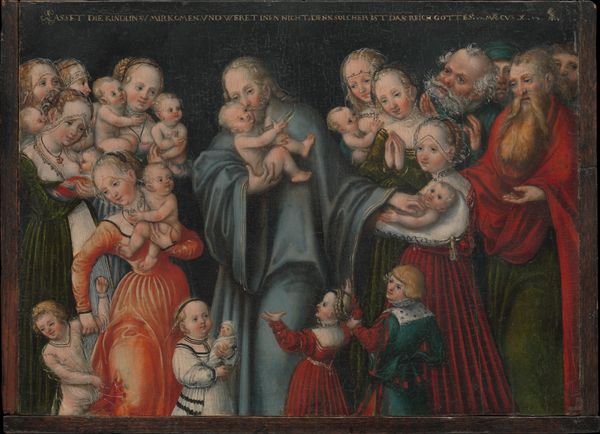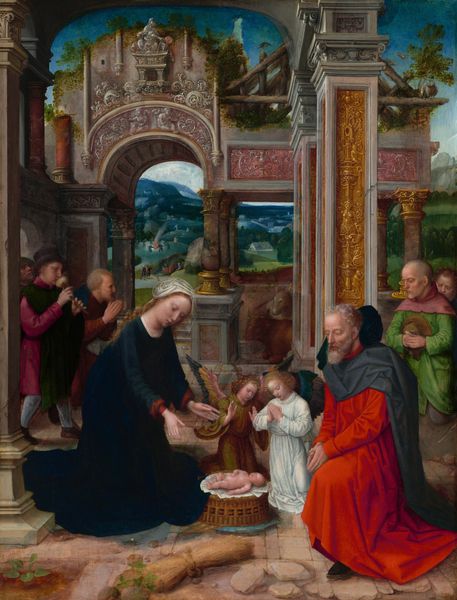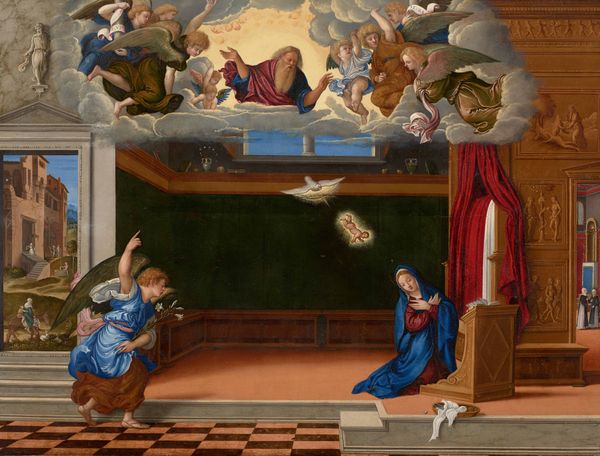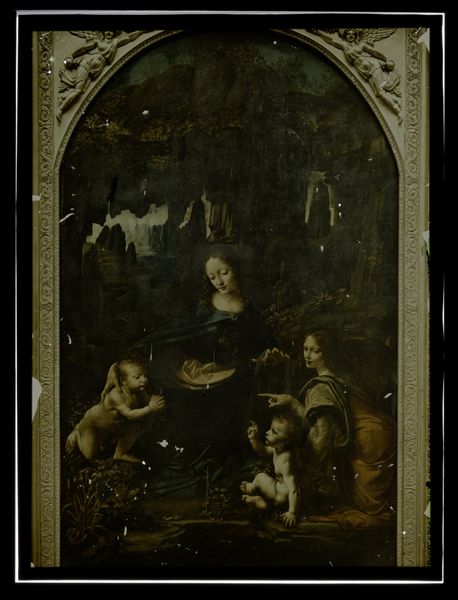
panel, painting, oil-paint
#
portrait
#
panel
#
narrative-art
#
painting
#
oil-paint
#
figuration
#
chiaroscuro
#
history-painting
#
italian-renaissance
Dimensions: height 88 cm, width 123 cm, height 75 cm, width 50 cm, depth 4 cm, height 75 cm, width 21 cm, depth 7.5 cm, height 88 cm, width 67 cm
Copyright: Rijks Museum: Open Domain
Editor: Here we have Pieter Coecke van Aelst's "Triptych with the Adoration of the Magi," painted between 1520 and 1550. It's an oil on panel work, and the cool tones create a surprisingly solemn mood. What stands out to you, especially in terms of symbolism? Curator: Immediately, the careful distribution of figures and the implied gazes trigger the concept of ritualistic visual storytelling. The Magi, distinctly portrayed, become not just worshippers, but potent symbols representing diverse cultures and lands acknowledging a central spiritual power. Consider the use of a Black magus - what statement is being made about universality of faith during this period? Editor: That’s fascinating! The Black magus really jumps out now that you mention it. Was this a common symbol at the time? Curator: The inclusion, while not entirely unique, certainly carried weight. Often, the Black magus was associated with the continent of Africa, representing the expansion of Christianity's reach. It’s not simply about representation, but the allegorical significance of incorporating diverse "known worlds" into the divine narrative. What feeling does the composition give you, focusing on Mary's central location? Editor: It almost feels like she’s presenting Jesus to the world. There is this visual connection with all the figures who are surrounding her. Curator: Precisely. It mirrors the sacred presentation within religious practice and reinforces the role of motherhood and divinity in shaping civilization itself. See how even light and shadow enhance the emotional gravity – the *chiaroscuro* adds layers to an otherwise conventional theme. These deliberate visual choices become tools of enduring symbolic meaning. Editor: I never considered the deeper implications of something seemingly straightforward like the magi’s skin color or Mary’s position. It is more than a pretty scene. Thanks for making it so clear! Curator: Indeed, every artistic decision holds the potential to unlock deeper understandings of cultural memory and symbolic evolution, it just needs proper context and perspective.
Comments
No comments
Be the first to comment and join the conversation on the ultimate creative platform.
